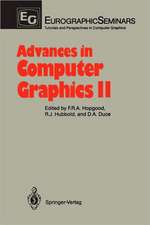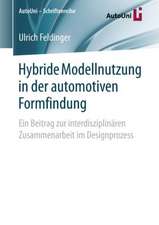Interactive System Identification: Prospects and Pitfalls: Communications and Control Engineering
Autor Torsten Bohlinen Limba Engleză Paperback – 5 iun 2012
Din seria Communications and Control Engineering
- 15%
 Preț: 659.70 lei
Preț: 659.70 lei - 20%
 Preț: 879.74 lei
Preț: 879.74 lei - 18%
 Preț: 953.65 lei
Preț: 953.65 lei - 18%
 Preț: 1117.03 lei
Preț: 1117.03 lei - 9%
 Preț: 1385.77 lei
Preț: 1385.77 lei - 18%
 Preț: 1128.08 lei
Preț: 1128.08 lei - 18%
 Preț: 953.65 lei
Preț: 953.65 lei - 15%
 Preț: 656.89 lei
Preț: 656.89 lei - 18%
 Preț: 896.52 lei
Preț: 896.52 lei - 18%
 Preț: 1113.26 lei
Preț: 1113.26 lei - 18%
 Preț: 1388.22 lei
Preț: 1388.22 lei - 15%
 Preț: 647.27 lei
Preț: 647.27 lei - 18%
 Preț: 954.45 lei
Preț: 954.45 lei - 18%
 Preț: 1231.47 lei
Preț: 1231.47 lei - 18%
 Preț: 948.92 lei
Preț: 948.92 lei - 18%
 Preț: 1232.57 lei
Preț: 1232.57 lei - 18%
 Preț: 1127.28 lei
Preț: 1127.28 lei - 15%
 Preț: 643.34 lei
Preț: 643.34 lei - 18%
 Preț: 1401.30 lei
Preț: 1401.30 lei - 15%
 Preț: 651.51 lei
Preț: 651.51 lei - 20%
 Preț: 1454.07 lei
Preț: 1454.07 lei - 18%
 Preț: 948.79 lei
Preț: 948.79 lei - 18%
 Preț: 1233.06 lei
Preț: 1233.06 lei - 18%
 Preț: 947.85 lei
Preț: 947.85 lei - 18%
 Preț: 950.96 lei
Preț: 950.96 lei - 18%
 Preț: 956.99 lei
Preț: 956.99 lei - 15%
 Preț: 644.18 lei
Preț: 644.18 lei - 18%
 Preț: 946.87 lei
Preț: 946.87 lei - 18%
 Preț: 951.14 lei
Preț: 951.14 lei - 18%
 Preț: 961.55 lei
Preț: 961.55 lei - 15%
 Preț: 644.18 lei
Preț: 644.18 lei - 20%
 Preț: 990.80 lei
Preț: 990.80 lei - 18%
 Preț: 1006.72 lei
Preț: 1006.72 lei - 18%
 Preț: 942.44 lei
Preț: 942.44 lei - 18%
 Preț: 1233.06 lei
Preț: 1233.06 lei - 15%
 Preț: 641.85 lei
Preț: 641.85 lei - 18%
 Preț: 957.75 lei
Preț: 957.75 lei - 15%
 Preț: 649.87 lei
Preț: 649.87 lei - 18%
 Preț: 958.07 lei
Preț: 958.07 lei - 18%
 Preț: 1117.99 lei
Preț: 1117.99 lei - 18%
 Preț: 1395.94 lei
Preț: 1395.94 lei - 18%
 Preț: 781.62 lei
Preț: 781.62 lei - 18%
 Preț: 953.20 lei
Preț: 953.20 lei - 18%
 Preț: 1109.78 lei
Preț: 1109.78 lei
Preț: 336.54 lei
Preț vechi: 420.67 lei
-20% Nou
Puncte Express: 505
Preț estimativ în valută:
64.40€ • 68.86$ • 53.69£
64.40€ • 68.86$ • 53.69£
Carte tipărită la comandă
Livrare economică 18 aprilie-02 mai
Preluare comenzi: 021 569.72.76
Specificații
ISBN-13: 9783642486203
ISBN-10: 3642486207
Pagini: 380
Ilustrații: XII, 365 p. 29 illus.
Dimensiuni: 155 x 235 x 20 mm
Greutate: 0.53 kg
Ediția:Softcover reprint of the original 1st ed. 1991
Editura: Springer Berlin, Heidelberg
Colecția Springer
Seria Communications and Control Engineering
Locul publicării:Berlin, Heidelberg, Germany
ISBN-10: 3642486207
Pagini: 380
Ilustrații: XII, 365 p. 29 illus.
Dimensiuni: 155 x 235 x 20 mm
Greutate: 0.53 kg
Ediția:Softcover reprint of the original 1st ed. 1991
Editura: Springer Berlin, Heidelberg
Colecția Springer
Seria Communications and Control Engineering
Locul publicării:Berlin, Heidelberg, Germany
Public țintă
Professional/practitionerCuprins
1: Introduction.- 1.1 The terminology.- 1.2 The software.- 1.3 The purpose.- 1.4 The experiment facilities.- 1.5 The model structure.- 1.6 The philosophy.- 2: Randomness, probability, and likelihood.- 2.1 Bayes’ idea.- 2.2 The information contents of an experiment.- 2.3 Covariation and causality.- 3: The experiment.- 3.1 An introductory example.- 3.2 Requirements for proper experimentation.- 3.4 Dynamic systems.- 3.5 Experiments on dynamic objects.- 4: The identification problem.- 4.1 Validation and falsification.- 4.2 Model structures, data descriptions, and purposive models.- 4.3 Fitting.- 4.4 Basic identification procedures.- 4.5 Conditions for Bayesian validation.- 4.6 The origin of ‘pitfalls’.- 5: Modelling.- 5.1 Parametrization.- 5.2 The parameter map.- 5.3 Algorithmic models.- 5.4 The modelling of dynamic systems.- 5.5 Internal and external models.- 5.6 Implicit and explicit models.- 5.7 Finite-memory models.- 5.8 Classification of models by purpose.- 5.9 ‘Black-box’ and ‘grey-box’ models.- 6: Large-sample theory.- 6.1 Equivalent dynamic models.- 6.2 Consistency.- 6.3 Identifiability.- 6.4 Falsification in the limit.- 6.5 Proper ‘black-box’ identification.- 6.6 A concluding example.- 7: Validation techniques.- 7.1 Validating parametric models.- 7.2 Large-sample techniques.- 7.3 Two ‘pitfalls’.- 8: Falsification techniques.- 8.1 Statistical tests.- 8.2 Unconditional falsification.- 8.3 Conditional falsification of models.- 8.4 Conditional falsification of structures.- 8.5 The Likelihood-Ratio test.- 8.6 Efficiency vs safety.- 9: Structure identification.- 9.1 Using the biassed Likelihood.- 9.2 Sequential falsification.- 9.3 Philosophy revisited: Equivalence vs goodness.- 9.4 Designing the criterion: Description vs purpose.- 9.5 Defining theoptimal order: Accuracy vs complexity.- 9.6 Model structure selection.- 9.7 Terminology revisited.- 10: A unified design procedure.- 10.1 Summary of conditions for proper identification.- 10.2 Identification procedures.- 10.3 Procedure for modelling and identification.- References.- Glossary of notations.























